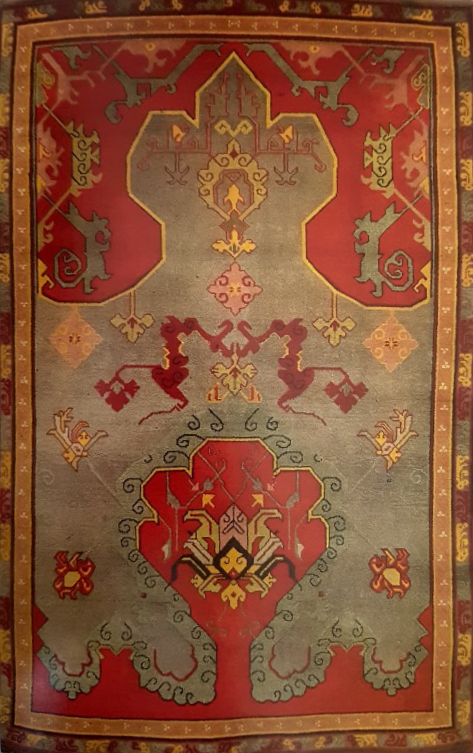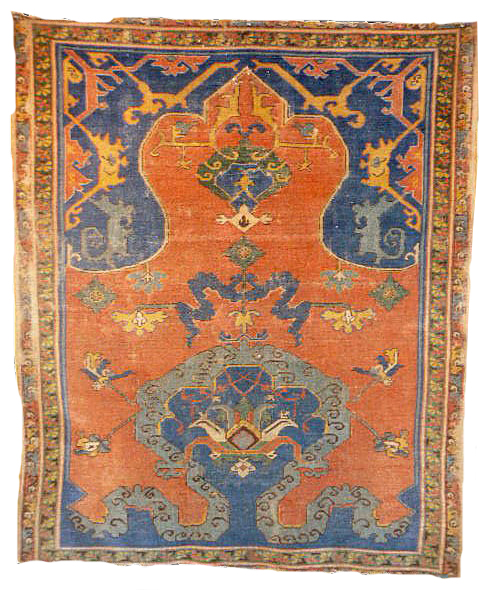

Part of the permanent collection , ‘Dream and Trauma’, at the Museum of Islamic Art in Berlin, the iconic Bode cloudband, a 17th century Oushak prayer rug is perhaps the most recognizable rug in the world.

The carpet belonged once to Wilhelm von Bode, a curator at the Friedrich Museum, now called the Bode Museum in Berlin.
It was offered to the museum in 1904, along with several other unique rugs from Bode’s private collection.

Bode’s cloudband Oushak prayer rug constitutes a most significant artifact within the musuem’s walls.
Chrispher Alexander, a British-American architect and design theorestist, used the Bode Oushak to illlustrate his highly controversial theory suggesting and defining criteria of the objective beauty in an art work.
“…the quality of wholeness is not merely a matter of preference or taste for different observers, but instead a definite, tangible, and objective quality, which really does exist to a greater or lesser degree in any given carpet”
In his seminal work, ‘A Foreshadowing of 21st Century Art – The Color and Geometry of Very Early Turkish Carpets’ Alexander proposes that:
‘This notion of beauty, ‘the detailed organisation of matter’ (p8) seems intangible but an analysis of structure can approach it in an objective fashion … ‘
and later:
‘As one empirical way to get past the overlay of preferences to an objective assessment of the quality of a carpet, Alexander proposes a peculiar method: ‘(..) we must construct a question which is so concrete that it shocks the system, and forces more direct, more true, and more accurate response’ (p28). ‘The question asks: “If you had to choose one of these two carpets, as a picture of your own self, then which one of the two carpets would you choose?”‘ (p28). (…) ‘In case you find it hard to ask the question, let me clarify by asking you to choose the one which seems better able to represent your whole being, the essence of yourself, good and bad, all that is human in you‘ (p29). I include a scan of the illustration of the two carpets as image quotation.

According to Alexander, most people faced with this question choose the Berlin prayer rug over the Kazak. ‘This happens essentially because the question focuses awareness on the real oneness of the person, and compares it with the oneness of the carpet. The carpet with greater oneness seems more like “me” because I am comparing it against my own oneness’ (p29). Alexander contends that this feeling of greater depth ‘is an objective judgement—not a subjective preference—and that it arises because indeed, the left-hand carpet has a deeper and more significant structure’ (p30). (-) oturn Art and writing practice and theory—and rug analyses
The Bode Oushak has of course been replicated; it appears in various collections around the world, with some observable differences as to prevent the suspicion of forgery.
Here are some examples of such replicas:



The Bode Oushak continues to mezmerize collectors with is mystery and simplicity; it is a Mona Lisa of the textile arts.
A.G.

